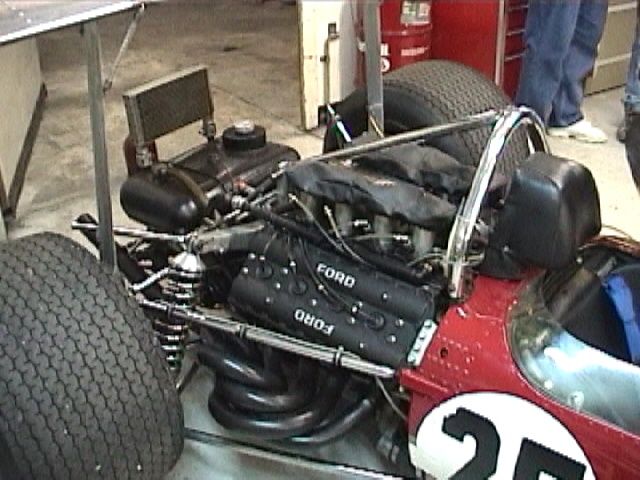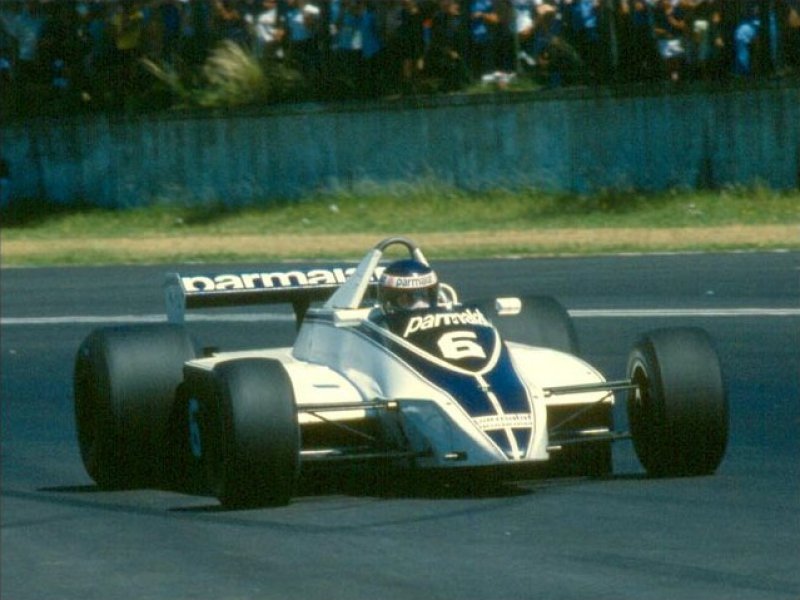I do not feel comfortable that so much load and vibration could pass through such a connection, but it worked, and I must assume it was engineered correctly.
The first car to use the DFV (as all historians are well aware) was the Lotus 49, and the fastening method was much more robust. The plate that fastens to the cylinder heads is fastened to the chassis with multiple rivets.

Leap forward to the Lotus 79 (same engine) and you can see that Chapman has changed the fastening method to just one bolt.

Please note that this picture is of a Lotus 79 model. But it also allows me to return to the original topic, and give a brief mention about the Lotus 79,
the first Formula One car to fully realise the potential of ground-effect aerodynamics.
This brilliant car revolutionized Formula One, and signalled a new era. It was a winner out of the box, and everyone else had to copy the important features of the 79 in order to remain competitive.

This illustration of the bottom of a Lotus 79 displays what the underbody was like. The venturi tunnels were smooth and uninterrupted, and had it's own airflow that was separate and distinct from such things as the radiators.
Also included in this illustration are the side skirts which sealed the side of the sidepods, and how they moved up and down in order to maintain a seal with the road surface. Naturally, they wore out quickly.
I figured that since this post was a bit large for me, I may as well throw in a picture of many things I really like and have respect for. The Lotus 79, Ronnie Peterson, and what is arguably the most beautiful paint scheme ever.
Ladies and gentleman, it is my honor and priviledge to present to you ...

Racing should be decided on the track, not the court room.








